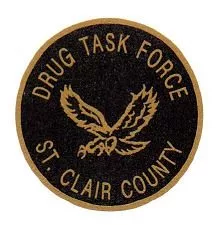BREAKING NEWS:
(SPORTS DIRECTOR COMMENT) – Questions remain as to the amount of spectators allowed at contests with the latest “clarification” that came out late Monday. While most schools intend to go to with the two spectators per athlete rul, the “clarification” also says up to 250 people allowed. Below is the release from the Michigan Department of Health and Human Services.
Masks must be worn during games and practice or regular COVID-19 testing conducted
LANSING, Mich. – The Michigan Department of Health and Human Services (MDHHS) has issued Interim Guidance for Athletics following its epidemic order announced last week to allow contact sports to resume starting today. The order requires masks are worn during practices and competition. If masks cannot be worn, participants must be regularly tested for COVID-19 consistent with guidelines issued by MDHHS.
“Safety protocols like wearing masks and testing will help keep kids, coaches and families safe and allow our schools to remain open for in-person instruction,” said Elizabeth Hertel, MDHHS director. “We also continue to urge hand washing, using separate equipment as much as possible and frequently cleaning and disinfecting any shared equipment and surfaces.”
Contact sports are allowed as long as participants are masked during play or practice. Participants need to maintain six feet of distance when not actively engaged in play and wear face masks at all times. For sports where masks cannot be worn and social distancing cannot be maintained, all participants must be tested consistent with the program specified in the Testing and Additional Mitigation Measures for Athletic Practice and Play section of MDHHS’s Interim Guidance for Athletics.
Additional information is available at Michigan.gov/sportsCOVIDinfo. Sports organizers are encouraged to administer a testing program even if it is not required.
“As a parent and former student-athlete myself, I get how important athletics are to our children’s physical and mental health,” said Dr. Joneigh Khaldun, chief medical executive and chief deputy for health at MDHHS. “However, parents and athletes need to understand the risk involved with contact sports if they choose to participate. Sports that require frequent closeness between players make it more difficult to prevent virus transmission even when mitigation measures are in place, including masks. Even when not required, we urge teams to implement a testing program to protect athletes, coaches and their families.”
It is recommended that spectators are limited to two per athlete. Spectators are allowed with up to 250 people in stadiums that seat less than 10,000 and up 500 people at venues that seat over 10,000 people.
Additional recommendations included in the MDHHS guidance include:
- Wash hands frequently and cover coughs and sneezes.
- Do not share items that are difficult to clean, sanitize or disinfect. Use separate towels, clothing or other items used to wipe faces or hands.
- Individuals should use their own gear/equipment and minimize sharing equipment.
- Individuals are encouraged to provide their own food, drinks and/or water.
- If a mask is removed during a break, participants must remain at least six feet apart from others.
- Refrain from pre- or post-event handshakes, hugs, fist bumps, high fives or contact celebrations.
- Ensure enough time between events or practices to allow for proper cleaning and disinfection of the facilities and shared equipment.
- Prioritize outdoor, as opposed to indoor, practice and play as much as possible.
- If playing inside, ensure ventilation systems or fans operate properly. Increase circulation of outdoor air as much as possible, for example by opening windows and doors.
- Areas with poor ventilation (weight rooms, small spaces) where social distancing cannot be implemented should be avoided.
- In practices, prioritize noncontact activity, like conditioning and drills, where social distancing can be maintained. Small groups may help reduce the risk of teamwide COVID-19 outbreaks as they allow for greater social distancing, easier contact tracing, and reducing the number of athletes that need to be quarantined.
- Minimize travel to other communities and regions for practices and competition.
- Limit the use of carpools, buses or other shared transportation between persons outside the same household. When riding in an automobile to a sports event, encourage players to ride to the sports event with persons living in their same household, and always wear a mask if traveling with persons outside the same household.



